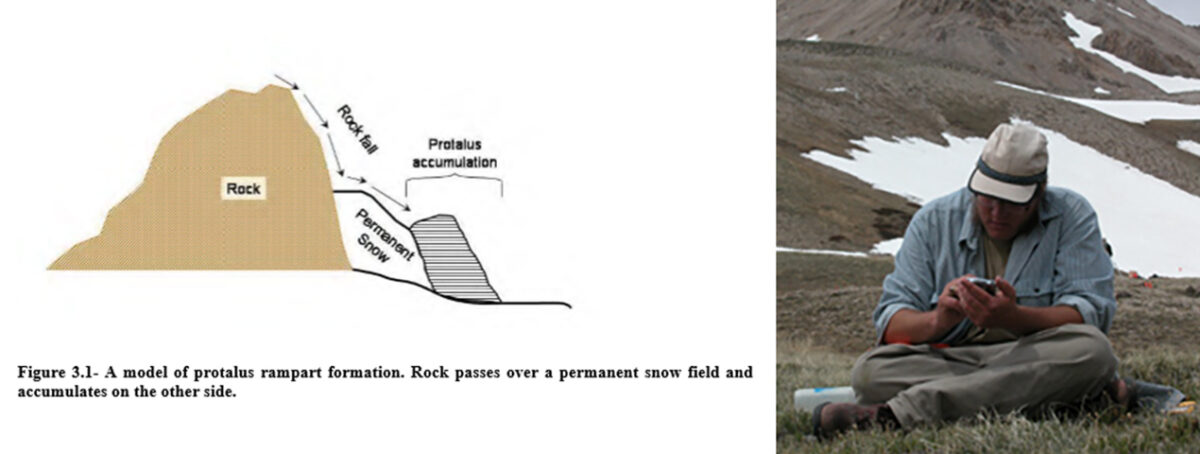HIGH ALTITUDE OCCUPATION AND RAW MATERIAL PROCUREMENT: DOLLAR MOUNTAIN A NORTHWESTERN WYOMING EXAMPLE
Click Thesis title to open fulltext pdf version of complete thesis
ABSTRACT OF THESIS
Studying past human behavior is best addressed by the study of the remains of human activity through the use of archaeological methods. But the study of these remains of past human behavior must take into account their context, and human behavior must be explained as a landscape based phenomena. This thesis explores the incorporation of geoarchaeological, geomorphological, and archaeological principles into a system of landscape analysis. Through the study of the changing nature of the landscape, a better understanding of human behavioral responses to a dynamic landscape can be gained. The research was conducted as part of the Greybull River Impact Zone Project in the Upper Wood River watershed on the eastern slope of the Absaroka Range of northwestern Wyoming, during the 2003 field season. At present no published data of prehistoric occupation are available from the high altitude regions of the Absaroka Mountains. Dollar Mountain frames the western edge of a cirque basin and contains a unique deposit of fine-grained cryptocrystalline chert that has not been reported in any archaeological literature as potential material for chipped stone tools. This thesis addresses the following questions: Were the high altitude cirques of the Absarokas utilized by prehistoric peoples? Was Dollar Mountain chert utilized by prehistoric peoples? What types of geological analysis can be incorporated into archaeological interpretation to develop a relative landscape age? By understanding landscape, can more informed hypotheses of prehistoric occupation be generated? Understanding of these research questions can lead to models of how human behavior has transformed to accommodate landscape change. Human behavior does not operate only on a site-specific scale; behavior is an interaction with the environment at a variety of levels. To build the most accurate models of past human behavior, human interaction with the environment must be considered at multiple scales.
William Thomas Reitze. Anthropology Department, Colorado State University, Fort Collins, CO 80523. Fall 2004

